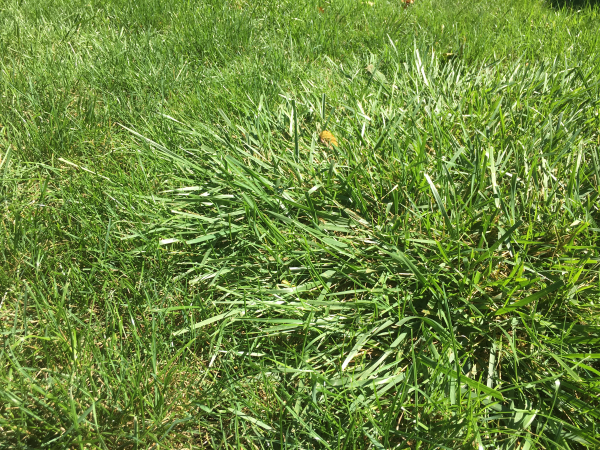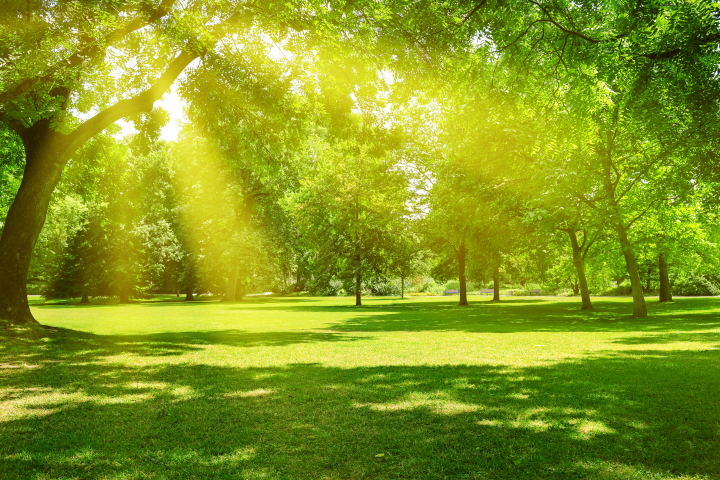Welcome to Turf Medic’s expert guide on the grass growth cycle. Understanding this cycle is crucial for achieving a lush, green lawn. MD’s unique climate and soil conditions require specific planting techniques for optimal results. In this guide, we’ll walk you through the best practices for planting grasses, including timing, soil preparation, and proper care. Whether you’re starting a new lawn or overseeding an existing one, our tips ensure your lawn thrives throughout the seasons.
Best Time to Plant Grass in Maryland Lawn
The ideal time to plant grasses is during the season fall months, between late August and early October. This period provides a perfect balance of warm soil temperatures and cooler air temperatures, which are essential for optimal seed germination. Additionally, fall planting allows the grass to establish a strong root system before winter sets in.
However, spring is also an acceptable time to plant grass seed. The key is to avoid planting during extreme weather conditions such as very hot or cold temperatures. Sowing seeds too early in the spring can result in slow growth due to colder soil temperatures, while planting too late may lead to heat stress for the newly germinated seeds.
Best Grass for Maryland
Selecting the right type of grass seed is crucial for a successful lawn. Here are some of the most suitable grass types for this region:
- Tall Fescue: This cool-season grass is well-adapted to the regions climate and can withstand hot summers and cold winters. It has a deep root system, making it drought-resistant and ideal for high-traffic areas.
- Kentucky Bluegrass: Another popular choice, Kentucky bluegrass, thrives in cooler temperatures and can handle moderate foot traffic. Its attractive dark green color makes it a favorite among homeowners.
- Perennial Ryegrass: This fast-growing grass is perfect for filling in bare spots or overseeding thin lawns. It has a fine texture and tolerates both sun and shade well. However, it may struggle in hot weather or extended periods of drought.

Factors to Consider
Before planting grass seed, several factors need to be considered to ensure the health and success of your lawn:
Soil Type and Quality
The quality of your soil greatly influences grass growth. Conduct a soil test to determine its pH level and nutrient content. Soils can vary significantly, so knowing whether your soil is sandy, clayey, or loamy helps you amend it appropriately. Adding organic matter, such as compost, can enhance soil structure and nutrient availability.
Sunlight Exposure
The amount of sunlight your lawn receives affects the type of grasses you should choose. Some grass types, like Kentucky bluegrass, thrive in full sun, while others, like tall fescue and perennial ryegrass, can tolerate partial shade. Assess your yard throughout the day to understand the light patterns.
Watering Requirements
Different grass species have varying water needs. Ensure you have an adequate irrigation plan in place, especially during the establishment phase. Weather can be unpredictable, so be prepared to water more frequently during dry spells to support new growth.


Existing Vegetation
Consider the current state of your lawn. If you have weeds or an existing poor-quality lawn, it may be necessary to clear these before planting new grass seed. Use appropriate herbicides or mechanical methods to remove unwanted vegetation and reduce competition for resources.
Local Climate
The climate in MD, which includes hot, humid summers and cold winters, demands careful selection of grass varieties that can cope with these conditions. Be mindful of potential weather extremes when planning your planting schedule and grass type.
Traffic and Usage
Factor in how much foot traffic your lawn will endure. High-traffic areas require more durable grass types like tall fescue, which can handle heavy use. For less frequently used areas, you might opt for grasses with finer textures that focus more on aesthetic appeal.
By carefully considering these factors, you can create a tailored plan for planting and maintaining a lush, resilient yard. Remember, consistent and proper care throughout the grass growth cycle is key to a healthy grow lawn. So don’t forget to regularly mow, fertilize, and water your yard to keep it looking its best.
How to Grow Grass
To grow a healthy and beautiful lawn, follow these steps:
Step 1: Soil Preparation
Proper soil preparation is crucial for successful grass planting. Start by conducting a soil test to determine its pH level and nutrient content. Based on the results, amend the soil if necessary by adding lime to raise the pH or sulfur to lower it. Incorporating organic matter, such as compost, can also improve soil structure and fertility, creating an ideal environment for grass to thrive.
Landscaping professionals also recommend aerating the soil before planting grass. This process involves puncturing small holes in the soil to allow air, water, and nutrients to reach the roots more easily.
Step 2: Choosing the Right Grass Seed
Selecting the right type of grass seed is essential for MD unique climate. Tall fescue, Kentucky bluegrass, and perennial ryegrass are excellent choices due to their resilience in hot summers and cold winters. Tall fescue is especially suitable for high-traffic areas, while Kentucky bluegrass offers aesthetic appeal with its dark green color. Perennial ryegrass is perfect for quick germination and filling in bare spots.
Step 3: Planting the Seed
Timing is critical when planting grass seed in your home. For best results, plant during the fall months between late August and early October. This period ensures optimal soil temperatures for germination and allows the grass to establish a strong root system before winter. Spring planting is also an option but should be timed to avoid extreme weather conditions that can hinder growth.
Step 4: Watering and Maintenance
Consistent watering is vital during the establishment period to support new growth. Keep the soil consistently moist but not waterlogged. Once the grass is established, adjust your watering schedule based on the type of grass and current weather conditions. Regular mowing, fertilizing, and weed control will help maintain the lawn’s health and appearance.
Step 5: Landscaping Considerations
Incorporate best landscaping practices to enhance the aesthetic and functional value of your lawn. Design your landscape to include pathways and garden beds that minimize high traffic on the grass, preserving its integrity. Regularly aerate your yard to ensure proper air and water movement within the soil, promoting healthy root growth.
By following these steps and considering the growth period for each grass type, you can achieve a lush, resilient lawn that enhances your home’s curb appeal and provides a beautiful outdoor space for relaxation and enjoyment.
Frequently Asked Questions about Soil Seedlings
When is the best time to plant grass in MD?
A: The ideal time for planting grasses is during the fall months, between late August and early October. This period provides optimal temperatures for seed germination and allows the grass to establish a strong root system before winter.
What type of grass seed should I use in MD?
A: Selecting the right type of lawn grass is crucial for MD unique climate. Tall fescue, Kentucky bluegrass, and perennial ryegrass are excellent choices due to their resilience in hot summers and cold winters.
How often should I water my grass seedlings?
A: Consistent watering during the establishment period is essential to support new growth. Keep the soil consistently moist but not waterlogged. Once the plant is established, adjust your watering schedule based on the type of plant and current weather conditions.
Can I plant grass in the spring instead of fall?
A: Spring planting is also an option but should be timed to avoid extreme weather conditions that can hinder growth. It’s best to consult with a local gardening expert for specific timelines based on your location in MD.
The time of year that you plant your grass seedlings can greatly impact their success. Generally, the best time to plant is in the fall when temperatures are cooler and there is typically more rainfall.
How can I maintain a healthy lawn in MD?
A: Regular mowing, fertilizing, and weed control are essential for maintaining a healthy yard. Proper landscaping techniques, such as minimizing high traffic areas and regular aeration, can also support the overall health of your yard.
Conclusion
Seed germination in MD requires careful consideration of various factors, from soil and sunlight to climate and usage. By preparing the soil, selecting the right grass seed, and following proper maintenance practices, you can establish a healthy and vibrant lawn that enhances your home’s landscape. Don’t forget to regularly assess your lawn’s needs and make necessary adjustments to ensure its long-term health and beauty. With proper season care, your lawn will be one of the highlights of your MD home for years to come.
Here at Turf Medic, we are committed to helping you achieve a beautiful and healthy lawn. Contact us today or visit https://turfmedic.com/ to learn more about our lawn care services. Together, we can create a landscape that you can be proud of and enjoy year-round.

